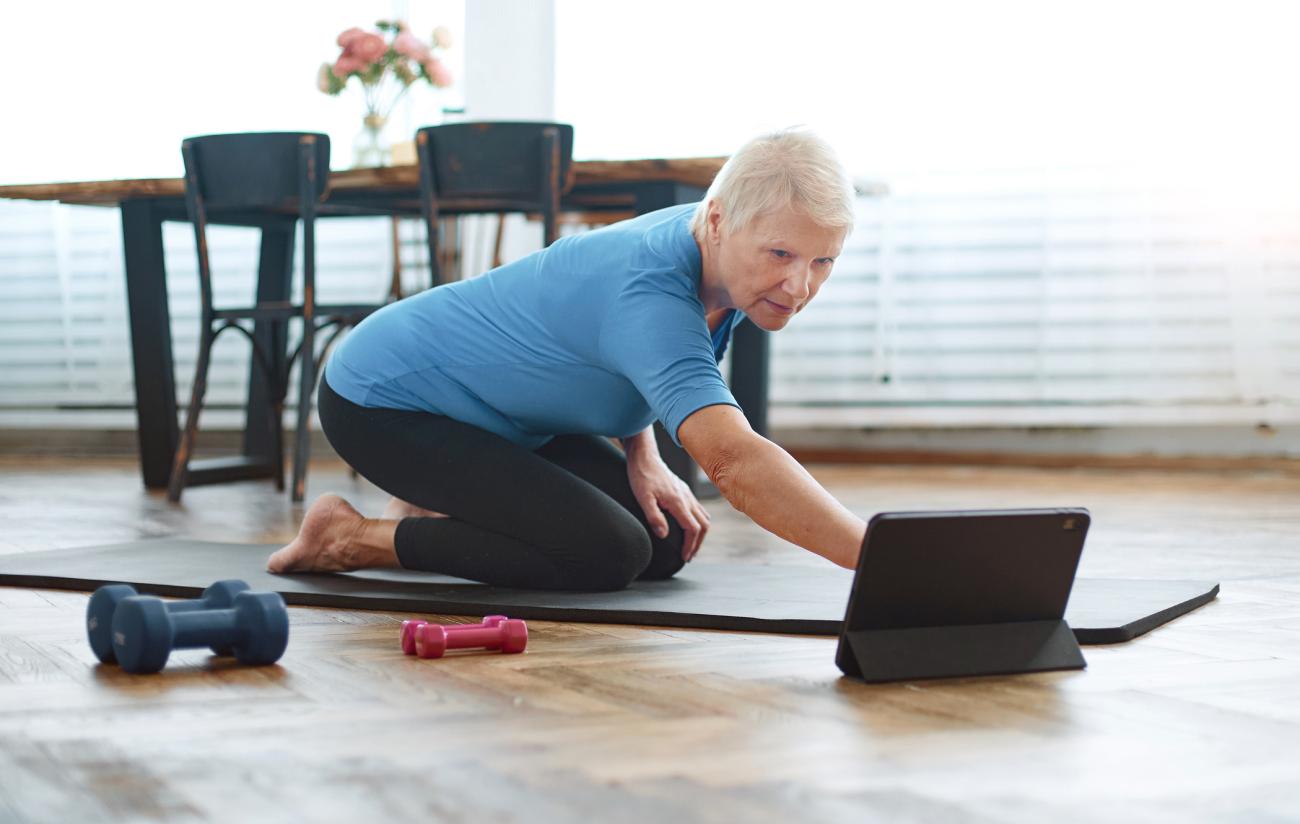
A first-of-its-kind program designed to improve mobility, balance and leg strength post-stroke is moving into phase two.
Strokes are a leading cause of death and disability in Canada, with a total of around 62,000 reported cases each year. Although approximately 80 per cent of stroke patients will regain their ability to walk, the neurological damage caused by a stroke often affects their balance and strength, thereby compromising their involvement in activities and putting them at greater risk of a fall — the leading cause of injury among older Canadians.
A new study led by Vancouver Coastal Health Research Institute researcher Dr. Brodie Sakakibara, McMaster associate professor Dr. Ada Tang and the national CanStroke Recovery Trials team, aims to improve stroke recovery through a novel virtual approach that improves leg strength and functioning.

The “TeleRehabilitation with Aims to Improve Lower extremity recovery post-stroke” (TRAIL) clinical trial is the first to evaluate a virtual exercise and self-management program that paired two stroke patients with a registered physical therapist.
“We wanted to include a peer support element in the program as this has been shown to support the recovery process through shared stories, experiences and encouragement.”
Sakakibara and Tang’s study recruited 32 community-dwelling adults ages 19 and older who have experienced a stroke within the past 18 months.

A physical therapist guided TRAIL participants through a graduated series of exercises over the course of two 60- to 90-minute sessions per week for four weeks. Using videoconferencing technology, participants were able to connect with the physical therapist from their home computer, laptop or tablet.
“The first week involved lower-intensity exercises, which the therapist increased over time,” explains Sakakibara, who has worked with stroke patients for around 10 years.
“Participants were guided through standing marching, leg raises and shifting weight exercises, to name a few, sometimes with an assist, such as a chair.”
A safe protocol that extends access to lower body rehabilitation
Researchers who led the feasibility study found that the protocol was not only safe, it offered a welcome alternative for patients in remote locations or those facing transportation barriers.
“A lot of people have their driver’s license revoked following a stroke because of the impacts a stroke can have on fine motor skills and cognition,” says Sakakibara.
“We found that using a virtual platform enhanced the access to this valuable resource for people recovering from stroke.”
Strokes mainly affect adults older than 55 years of age. While most will recover, too little rehabilitation puts them at risk of long-term disability and a lower quality of life. This makes improving mobility, walking and functional independence a key part of stroke recovery, Sakakibara says.
“One of the biggest concerns with lower body exercises for stroke patients is the potential for a fall, especially when the rehabilitation is delivered remotely,” he notes. “For this reason, therapists received an extra layer of training and were given a checklist of emergency preparedness protocols to undertake before each session, such as noting the participant’s location should emergency care be required.”
Researchers observed widespread exercise adherence and no adverse events among study participants, says Sakakibara. Many participants and clinicians also voiced their satisfaction with the virtual program that increases the amount of rehabilitation after the end of formal in- and out-patient rehabilitation.
Following in the steps of the TRAIL feasibility study, Sakakibara, with project grant funds from the CIHR, is recruiting almost 100 participants for a larger, multi-centre, three-year clinical trial to further validate the lower extremity telerehabilitation program for stroke patients.
To learn more about participating, contact Brodie Sakakibara at brodie.sakakibara@ubc.ca or 250-807-8505.


